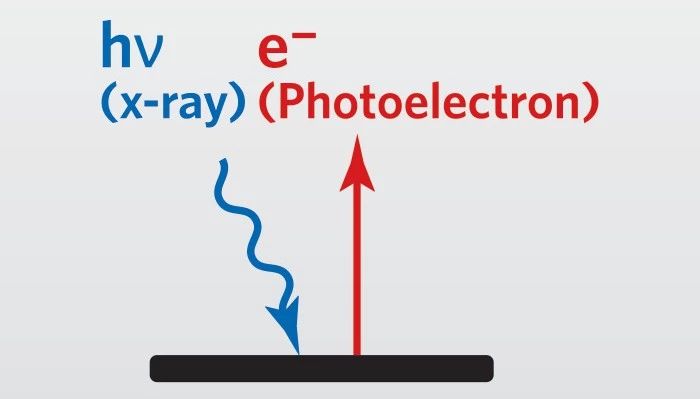1. 如何非常详细地描述 XPS 实验结果?
举例:X-ray photoelectronspectroscopy (XPS) was used to characterize the Cu oxidation state. The coexistence of Cu(I) and Cu(II) in fresh 3K-Cu-20TiO2 catalyst is evidenced by a shoulder observed on the main peak at 931.6 eV (Figure 2a), which is assigned to Cu(I)species. The higher binding energy (BE) Cu 2p3/2 peak at 933.7 eV and its shakeup satellites are due to Cu(II). The Cu(I) percentage in fresh mesoporous 3K-Cu-20TiO2 is estimated to be44%. For mesoporous 3K-Cu-50TiO2 , only Cu(I) species are confirmed by XPS. These Cu(I)species can be completely oxidized to Cu(II) by oxygen at 250 °C as evidenced by temperature programmed oxidation (TPO) and XPS data.
参考文献:Fan, J. et al., J. Am. Chem. Soc. 2009, 131, 15568 –15569.
提炼语言模板:
为什么做这个表征:
X-ray photoelectronspectroscopy (XPS) was used to characterize the 元素名称 oxidation state.
得到了哪些信息,说明了哪些问题:
定性分析结果:The coexistence of 元素化合态(I) and 元素化合态(II) in 样品名 catalyst is evidenced by a shoulder observed on the main peak at 峰位置 eV (Figure2a), which is assigned to 物种类型 species. The higher binding energy (BE) 峰属性 peak at 峰位置 eV and its shakeup satellites are due t o 物种类型.
For 样品名, only 物种类型 species are confirmed by XPS.
定量分析结果:The 物种类型 percentage in 样品名 is estimated to be 百分比.
从这些信息可还可以进一步得到什么:These 物种类型 species can be completely ___ to 物种类型 by 处理方法 as evidenced by 表征手段。

2.不同文章中描写 XPS 结果可能详略不一,下面总结一些比较常见的写法供大家参考。
A. 主峰的定性分析(蓝色标记部分 即为模板):
The In 3d spectrum exhibits two contributions, 3d5/2 and 3d3/2 (resulting from the spin–orbit splitting), located at respectively 444.7 and 452.2 eV(Figure 2a, bottom),which can be assigned to InP. The P 2p spectrum(Figure 2b, bottom) clearly evidences the presence of two chemical environments for phosphorus atoms. The spectrum has been fitted by considering two resolved doublets (with a spin–orbit splitting of ∼0.9 eV between 2p3/2 and 2p1/2). The first predominant doublet, present at 128.7–129.6 eV, is characteristic of InP. The second one, with a lower intensity, is located at higher binding energies, 133.2–134.1eV, and corresponds, in agreement with the NMR results, to phosphorus in an oxidized environment, probably InPOx.
参考文献:Virieux, H. et al. J. Am. Chem. Soc, 2012, 134, 19701-19708
B. 处理前后XPS主峰的变动
1. The shift in BEs when comparing the neat ZnO, CuO and the composite material (Table 2)provides evidence of an interaction between the Cu2+ and Zn2+ species. Inclusion of La into the system shifted the Cu 2p3/2 peak maxima (Fig. 3) from 933.4 eV at low La loadings(1 wt%) to 933.7 eV at higher La loadings (11 wt%) and was accompanied by a decrease in La 3d5/2 peak maxima (Table 2) from 835.4 to 835.1 eV, demonstrating an interaction betweenCuO and La2O3. The simultaneous and opposing changes to Cu 2p and La 3d BEs infer a decrease in electron density in the Cu nucleus by increasing La dopant concentration.La2O3 inclusion had no influence on the ZnO peak maxima.
参考文献:Kam, R. et al., J. Catal. 2010, 273, 73-81.
2. Figure 5a summarizes the binding energy shifts measured with respect to Au-bulk (Au-4f7/2 = 84.0 eV) as a function of cluster size and support. An increase in the BE shift withdecreasing cluster size has been observed for Au/SiO2/n-Si(001) in accordance with Chusuei et al.31 with a maximum shift of 0.88 eV at 1.5 nm.
参考文献:Cuenya, B. J. Am. Chem. Soc., 2003, 125 (42), pp 12928–12934
C. XPS全谱的描述
Surface analysis of the films was carried out using X-ray photoelectron spectroscopy (Figure 3). The Sb 3d5/2 and 3d3/2 peaks are observed at 529.7 and 537.3 eV,respectively. Additional peaks (525.9 and 535.4 eV) for Sb 3d indicate different chemical environments i.e., Sb−O and Sb−Te. The values of 539.6 eV(3d3/2) and 530.3 eV (3d5/2) are reported for antimony oxidein the literature. A broad peakfor Sb 3d3/2 is obtained due to overlapping with the O 1s (529.6 eV) peak. Thetwo Te 3d signals, corresponding to Te−Sb and Te−O, are also seen. The values for Te−O, i.e., 584 eV (3d3/2) and 574 eV (3d5/2), are comparable to literature values of 586 (3d3/2) and 576 eV (3d5/2).The presence of the O1s peak indicates that oxidation of the film takes place after exposure to the atmosphere.
参考文献:Garje, S.J. Am. Chem. Soc., 2006, 128 (10), pp 3120–3121
D. 定量描述样品表面各元素含量
XPS revealed that N-doping occurred at a temperature as low as 300 °C for GO annealed in NH3, with∼3.2% N detected in the sample (Figures 1b, 2a). N levels in GO sheets annealed in NH3 between 300 and 1100 °C were in a range of ∼3−5%, with 500 °C annealing affording the highest N-doping levelof∼5% (Figure 2a). Comparing the oxygen levels of GO samples annealed in NH3 andH2 at various temperatures, we found that the oxygen levels in GO annealed in NH3 were lower than in those annealed in H2 at the same temperatures except for 1100 °C (Figure 2b). This indicated more effective reduction effects of thermal annealing in NH3 than in H2 below∼1100 °C.
参考文献:Li, X. J.Am. Chem. Soc., 2009, 131 (43), pp 15939–15944

